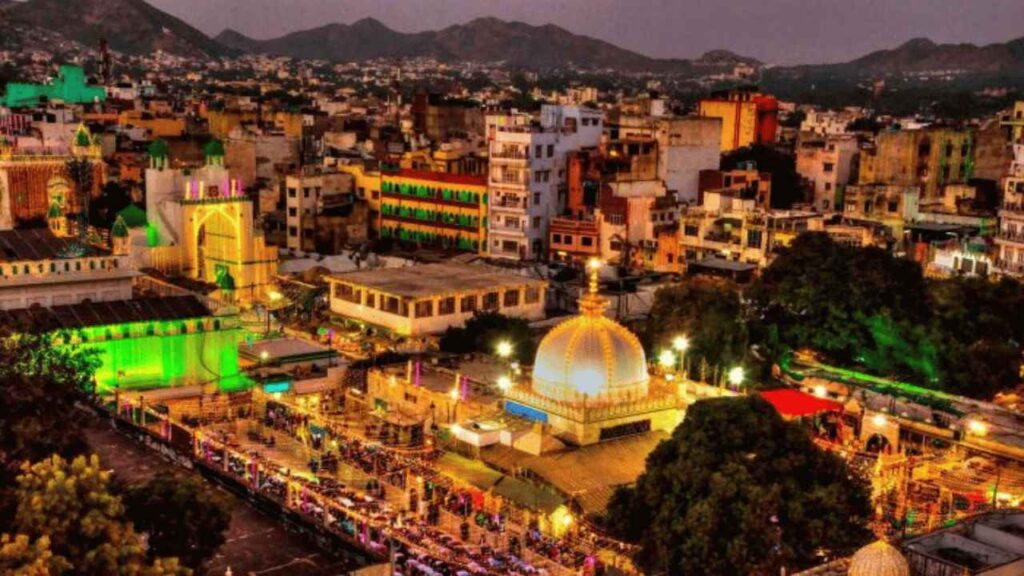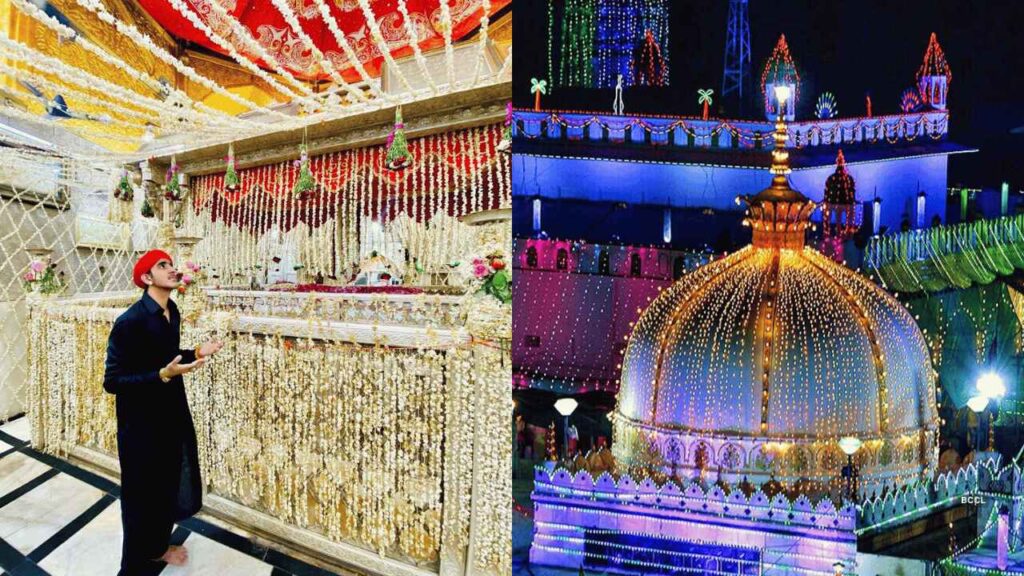Have you heard the story of Ajmer Sharif? Yes, you might have heard it in many conversations, but today I am going to tell you its true story, which will blow your mind. So, without wasting any time, let us go straight to the story. Whenever we hear the name of Ajmer, the name of Ajmer Dargah immediately comes to mind.
Ajmer Sharif Dargah: Story Of Ajmer sharif
The second you hear the word Ajmer, the Ajmer Sharif Dargah of Khwaja Moin-ud-din Chishti is sure to come into your head. It is a dargah of Islamic significance that was built in memory of Khwaja Moinuddin Chisti. It is typically a Suf, and a hoard of devotees visit it to experience peace.
The Ajmer Sharif Dargah is truly a special place! It’s the tomb of the Sufi saint Khwaja Moinuddin Chisti and is considered one of the holiest places in the world for Muslims. When you visit, you can feel the power and spirituality through the beautiful hymns sung by the Sufi saints. It’s fascinating to know that the dargah was built during the Mughal Empire, under the rule of Humayun.
Khwaja Moinuddin Chisti was such a noble saint, dedicated to helping the poor and spreading the message of selfless service. His teachings are so beloved that people from all over come to the dargah to pay their respects at his tomb. It’s truly a place of reverence and inspiration.
The history of the Ajmer Sharif Dargah

The history of the Ajmer Sharif Dargah is absolutely fascinating! You won’t believe the stories and the sense of peace you’ll experience there. So, Khwaja Moinuddin Chisti, a Persian man who settled in Lahore, India, was the Sufi saint associated with this sacred place. Legend has it that he used to lock himself up here to pray for the less fortunate.
Also Read: Best Place to Visit in Jamnagar: A City Steeped in History and Natural Beauty
When he passed away in the 13th century at the age of 114, his mortal remains were laid to rest in the tomb that we see today. People still believe in his spiritual powers, and there are tales of wishes coming true if made in front of his tomb at the Ajmer Sharif Dargah. It’s truly awe-inspiring!
The architecture of the Ajmer Sharif Dargah

The architecture of the Ajmer Sharif Dargah is absolutely stunning! It reflects the beautiful Mughal style that was prevalent during that time. As you explore the Dargah, you’ll come across various courtyards and structures like the Jama Masjid, Buland Darwaza, and Nizam Gate.
When you enter, the grand Buland Darwaza will greet you with its majestic presence. And the tomb of Khwaja Moinuddin Chisti itself is a masterpiece of Mughal architecture. It’s located in a dome-shaped chamber adorned with silver railings, and the pillars and walls surrounding it are made of marble, adding to the overall beauty of the place. It’s truly a sight to behold!
The celebrations at Ajmer Sharif Dargah

The celebrations at Ajmer Sharif Dargah are absolutely incredible! You’ll be amazed at the festive atmosphere, even if it’s not during a specific festival. The Dargah is filled with visitors, and you’ll be surrounded by beautiful lights, soulful qawwali singers, and a positive spiritual vibe that will transport you to another world.
One celebration you must experience is the ‘Urs’ festival. It lasts for 6 days and takes place in the 7th month of the Islamic lunar calendar. During Urs, the Buland Darwaza remains open for 24 hours every day. The whole atmosphere is just magical and will truly immerse you in Islamic culture. It’s a time to feel spiritually rejuvenated and connect with something greater. You’re in for an amazing experience!
FAQs
What is Ajmer Sharif Dargah?
Ajmer Sharif Dargah is a mausoleum and shrine dedicated to the Sufi saint Khwaja Moinuddin Chishti, located in Ajmer, India. It is considered one of the holiest places in Islam and attracts millions of pilgrims from all over the world.
Who was Khwaja Moinuddin Chishti?
Khwaja Moinuddin Chishti was a 13th century Sufi saint known for his piety, humility, and dedication to helping the poor. He is honored for spreading the message of peace, tolerance and selfless service.
When was Ajmer Sharif Dargah built?
Construction of the Dargah began in the 16th century during the reign of Mughal emperor Humayun and continued under subsequent Mughal rulers.
What is the importance of Dargah?
The Dargah is important for Muslims to pay homage to Khwaja Moinuddin Chishti, seek blessings, and experience spiritual peace. It is also a symbol of religious harmony and cultural exchange as people from all religions visit this temple.
How is the architecture?
The Dargah reflects the Mughal architectural style, including grand courtyards, intricate carvings, and the use of marble. Notable features include the Buland Darwaza (Grand Gate), the Jama Masjid (mosque), and the tomb chamber, which is decorated with silver railings and marble.
Which festivals are organized at the Dargah?
The dargah is often full of activity and enlivened with devotional singing (qawwali). The most prominent festival is the Urs festival, a six-day event held every year in the 7th month of the Islamic lunar calendar. During Urs, thousands of devotees gather for prayers, special offerings, and a festive atmosphere.
Is it necessary to wear decent clothes while visiting Dargah?
As a place of religious significance, visitors are expected to dress modestly, covering their shoulders and knees. It is also customary to remove shoes before entering the temple area.
Are there any specific rules or etiquette to follow while traveling?
Respectful behavior and maintaining silence within the pilgrimage area are encouraged. Photography is generally not allowed inside the tomb. It is important to follow local customs and respect cultural norms when traveling to holy places.

Great article. Keep posting. Encouraging your concept. Thanks.